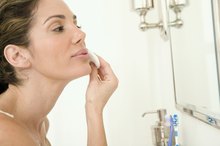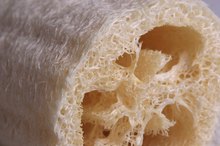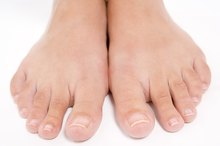How to Best Treat an Underground Pimple
Underground pimples, aptly named because they develop deeply under the skin's surface, are medically referred to as cystic acne 2. They occur when the pore ruptures underneath the skin, causing inflammation around the surrounding tissue. Underground pimples are different from standard pimples because they're so deep within the skin and, as a result, should not be treated the same way. Squeezing an underground pimple can result in extreme pain, pimple bruising and even permanent scars once the pimple heals.
Read more about the dangers of popping pimples.
Wash the affected area with a gentle acne cleanser and warm water. Massage the cleanser into the skin for roughly three minutes, rinse and then pat dry with a clean towel. Repeat no more than twice daily.
About Rubbing Alcohol on Acne Skin
Learn More
Place a hot compress or washcloth soaked in hot water over the underground pimple, and let it set for roughly 30 minutes.
Apply a small dab of topical acne treatment to spot-treat the underground pimple. Use a treatment that contains acne-fighting benzoyl peroxide.
Read more about how to treat pimples that are deep under the skin.
How to Treat Acne Cysts
Learn More
Repeat daily until the underground pimple is gone. Refrain from squeezing, touching or applying heavy cosmetics to the area for a faster heal time.
Tips
Underground pimples look similar to bug bites — large, slightly raised, red bumps — and have a longer life span than standard pimples.
Warnings
Speak to a dermatologist about a prescription for a more potent acne treatment if cystic acne is a persistent issue.
Related Articles
References
- Skincarenet.org: Beautiful Skin At Any Age
- Dermatlanta: Cystic Acne
- Tanghetti EA, Kawata AK, Daniels SR, Yeomans K, Burk CT, Callender VD. Understanding the burden of adult female acne. J Clin Aesthet Dermatol. 2014;7(2):22-30.
- Well D. Acne vulgaris: A review of causes and treatment options. Nurse Pract. 2013;38(10):22-31. doi:10.1097/01.NPR.0000434089.88606.70
- Abad-casintahan F, Chow SK, Goh CL, et al. Frequency and characteristics of acne-related post-inflammatory hyperpigmentation. J Dermatol. 2016;43(7):826-8. doi:10.1111/1346-8138.13263
- Grant JE, Brian OL. Excoriating (Skin-Picking) Disorder. In: Phillips KA, Stein DJ, editors. Handbook on Obsessive Compulsive and Related Disorders. Washington, DC: American Psychiatric Publishing; 2015.
- National Institute of Arthritis and Musculoskeletal and Skin Diseases (NIAMS)."Questions and Answers About Acne."
- Zaenglein AL, Pathy AL, Schlosser BJ, et al. "Guidelines of Care for the Management of Acne Vulgaris."Journal of the American Academy of Dermatology. 2016 May;74(5):945-73.
Writer Bio
Wendy Rose Gould is a professional journalist who has contributed to "Glamour" magazine and the Huffington Post, among other publications. After internships at the "Indianapolis Business Journal," "Kiwanis International" and "NUVO Newsweekly," she earned BA degrees in journalism and philosophy from Franklin College in 2008. Gould specializes in lifestyle topics.









